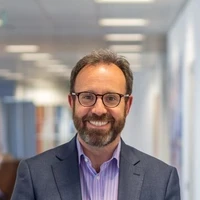How we’re improving diversity, equality and inclusion: August 2020 update
At Teach First, July is dominated by the Summer Institute. During this event, our incoming cohort gathers for five weeks to begin their journey.
We put a lot of emphasis on the Institute for setting the tone, although it is important to remember it is the start of two years training, not a complete preparation in its own right. This year, the ‘gathering’ was also entirely virtual in response to Covid-19. The culture and community created within the cohort are vital to sustaining them through the challenges ahead - how would that change in a digital setting? And how could we conduct the vital practice routines outside of a physical setting?
Because of its importance in setting the tone, we wanted to make sure that our work on diversity and inclusion - particularly on race in response to Black Lives Matter - received additional focus this year. It has been criticised in the past for being optional, for being ham-fisted at times and for not always swiftly and effectively addressing any incidents between trainees or staff. So, as well as completely re-writing the entire curriculum for digital delivery, the team expanded and improved the content on equality in general and race in particular.
We increased the mandatory content, with the equivalent of a full day’s input on equality, diversity and inclusion.
I began the Institute with an opening address where, as before, I directly tackled the issue of the saviour complex. We need teachers not saviours. To be fair, accepting this is liberating for some trainees, as they can listen and learn rather than try to save the world on day one. Although, with an increasingly diverse cohort, not all need this point laboured - 30% of the last cohort went to Teach First eligible schools themselves.
We increased the mandatory content, with the equivalent of a full day’s input on equality, diversity and inclusion towards the start of the Institute. This is about 4% of the total formal content. Two of the sessions focused on race in education.
We also added a range of optional sessions diving deeper into specific aspects of equality, diversity and inclusion. Every trainee had to attend at least two of these sessions, and we frequently worked with outside experts on their design and delivery. For example, in the South East South Central region we worked with The Black Curriculum. The content of many of these sessions remains open to trainees after Summer Institute.
Finally, we expanded our affinity networks to cover a wider range of communities and attempted to transfer more control and leadership of the groups to the participants themselves. These networks are explicitly for those with lived experience and active allies, all of which remain active beyond Summer Institute. In addition to the long-established BAME and LGBT+ networks, and the growing groups for faith, career changers and working parents, this year we added networks for disability and neurodiversity.
Early feedback is positive. 94% of trainees said the sessions on diversity and equality were helpful.
We need to conduct a formal evaluation on these, but early feedback is positive. 94% of trainees said the sessions on diversity and equality were helpful. I can’t imagine we have got it all right, so this will be an ongoing process of improvement. As I said at the start, Summer Institute begins our training, it doesn’t complete it; so we will return to these topics in the two years of the programme that lie ahead. A shout out here to our university partners, whose tutors are already playing a key role in this ongoing work.
We are also very aware that the experience of trainees in schools is fundamental to their success. We are looking carefully at our leadership programmes so that we can work alongside school leaders as they build cultures where everyone can thrive. We’ll provide future updates on this during the year.
This occupied most of our time in the preceding month. However, we have continued to work on our internal culture. We have published our ethnicity pay gap report, for example. This is a voluntary publication, and we will continue to publish it each year alongside our gender pay gap. We’ve also published all the demographic data we hold on our employees, as we believe change is driven by transparency. We will publish this data annually so you can see how we’re progressing. You can read all our reports via our diversity and inclusion webpages.
We are looking carefully at our leadership programmes so we can work alongside school leaders as they build cultures where everyone can thrive.
Last month we signed up to the BITC Race at Work Charter. This will enable us to benchmark our practices and outcomes against other organisations in a range of sectors. We have found this helpful in other spheres - like our work with Stonewall on LGBT+ inclusion - to help us track progress, challenge our ambition, gain ideas and target interventions.
As mentioned previously, we are in the middle of recruitment for three specialist roles to support our work with trainees and programme members; so there have been a lot of interviews this month - using our new shortlisting requirements. We have also been in discussion with external organisations and networks who are more experienced than us in this field. We are grateful for their time and look forward to sharing more news on partnerships in the months ahead.
I hope this update gives you a sense of our continued progress and look forward to discussing further work at about this point in each month to come. Each step is modest by itself, but after a year of such steps, the overall change could be significant.
